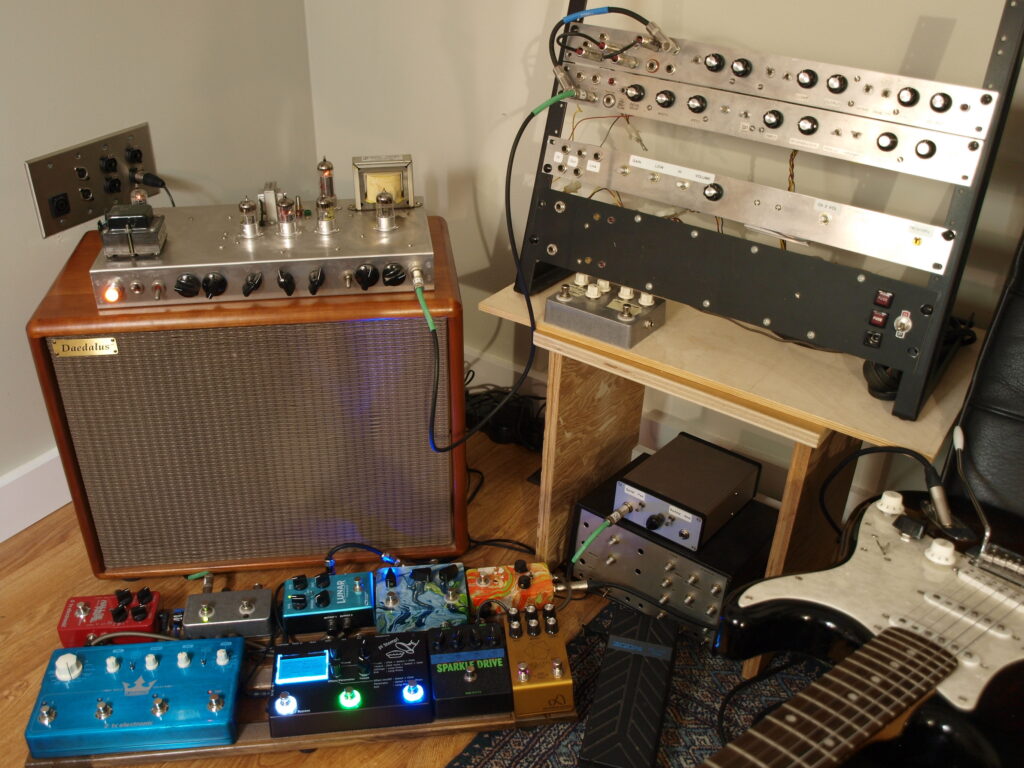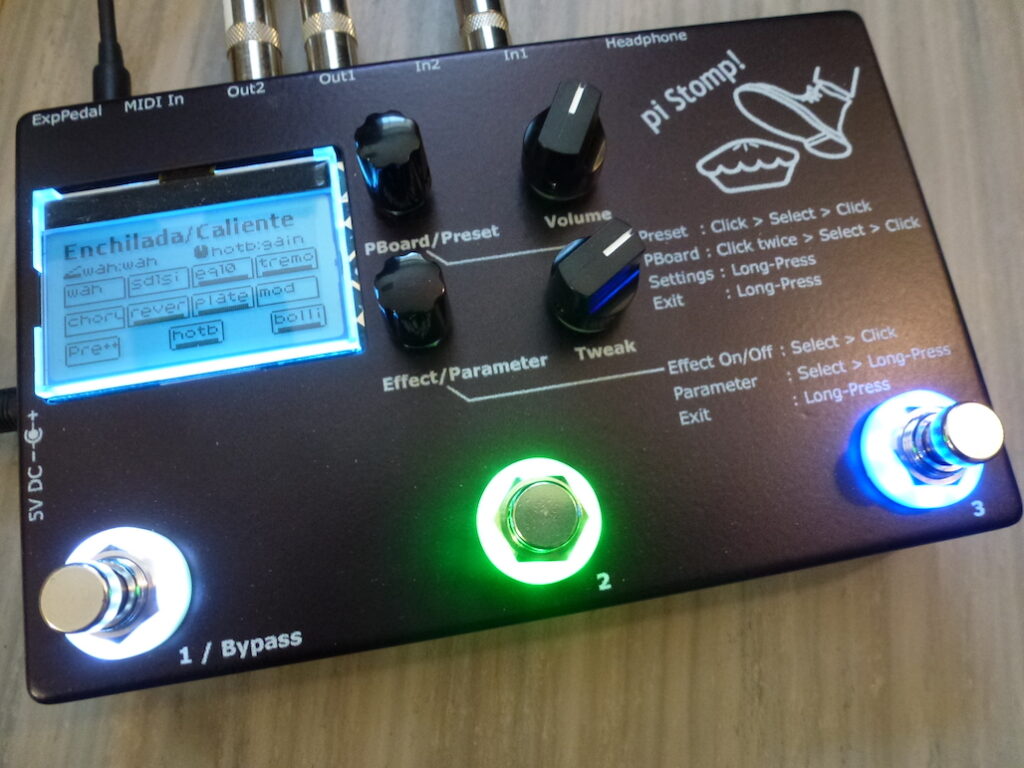As soon as one steps into the world of music, comes the realization of endless possibilities where you could go with your art. The ideas start floating in only to make you realize you need something more. Something that would allow you to bring them to life. Thanks to the creators like Randall Reichenbach, the inventor of pi-Stomp Original & pi-Stomp Core, some of those ideas can become way more approachable. We invite you to a short conversation with Randall where we discuss his projects, relationship with music and future plans.

Take a look at pi-Stomp introduction video:
Let’s start from the beginning. When did music become a part of your life, and how did your creative journey begin?
I’ve been obsessed with music since I was about 10. Got my first guitar when I was 15 and music making has been my favorite hobby since. My first musical gadget, started with an $8 quarter-watt hobby amp board that my dad let me borrow. He never got it back. It sounded crappy as an amp, but I connected the output to the input of my practice amp and discovered glorious distortion. I added a footswitch and an enclosure and sold similar “pedals” to friends for $25 which was much cheaper than an MXR distortion+. Around 1984, I discovered Craig Anderton’s articles in Guitar Player Magazine and ordered his Electronic Projects for Musicians book. Within a couple years, I had hand etched my own circuit boards and built probably half of the 23 projects from the book. The photo below shows four of them that I rack mounted: a preamp, compressor, fuzz, chorus/delay, along with a phaser, noise gate and parametric EQ in various other enclosures.

How and why did you come up with the idea of creating pi-Stomp? What are its functions and advantages?
Since those early days, I’ve always loved the idea of “presets”. Many of my early effect designs included extra switches and knobs so I could instantaneously switch between two “preset” settings without knob turning. I’ve owned many multi-fx units throughout the years, largely because patches/presets could be recalled at the press of a button. I always wanted to build such a beast but it wasn’t until recently that I felt it could be done by mere mortals without access to a custom DSP hardware and software. Raspberry pi finally offered the processing power. Then discovering MOD/MODEP, I finally had a software plugin platform to make a DIY multi-effects pedal possible. Others had created Arduino or pi based effects. But, they were either low fidelity, could only do one effect at a time, not really meant for high-impedance guitar pickups, or were a one-off project built for themselves. I felt if I was going to spend the time to create a pedal, I should do the extra work to make it build-able and enjoyable by others.

What were the biggest challenges you had to face while creating pi-Stomp? How did you manage to solve them?
Creating something that others can build, I discovered, is not easy. I had my first prototype within two months of having the idea. Making it buildable by others: choosing standard parts, common construction methods without hacks, tight mechanical tolerance, documenting it all, etc. … That took over a year! But it also makes the extra work worth it knowing others can enjoy it eventually. The analog circuitry was also challenging. It’s not super complicated, but the power onboard Raspberry Pi is lower voltage than typical for effects pedals and riddled with digital noise. So in addition to regulating and filtering the power, I found that the circuit board layout and grounding scheme is quite critical to keeping a low noise floor. Although you can simulate some aspects of circuit board layout, the only way to know for sure if a new board layout works well is to have it fabricated, then assemble and see. I did four board runs, with months of wait time, just to get the analog circuits tweaked. Sourcing the machining/finishing for large-ish custom enclosures is also not trivial. It took me almost a year to finally find a shop in the US that could do it at a price that wouldn’t have dominated the total parts cost.
For the brain of your project, you are using Raspberry Pi and MODEP. Why do you think they are important for pi-Stomp? Why did you choose them?
pi-Stomp would not exist without Raspberry Pi and MODEP. Both projects created awesome open source platforms for others to build upon. pi-Stomp can run other audio software like Rakarrack and Carla, but for a pedal based platform, MOD/MODEP is by far the most feature rich, flexible and expandable with over 350 plugins. It has a beautiful, easy to use web-UI. It also includes a web API, which the pi-Stomp software uses to query and modify pedalboard and plugin configuration. It’s not what I’d call “complete”, but I was able to hack it just slightly to add the missing endpoints.
The video below was recorded only using pi-Stomp, an amp and an audio interface. All effects are from MODEP. The Left side is from the mic’ed amp. The Right side is direct from the pi-Stomp using the guitarix amp and cabinet simulators from MODEP. It’s a great demonstration of how well the simulators compare to a real tube amp and cabinet.
While creating these amazing gadgets, you are a musician as well. How would you describe your sound, and where do you seek inspiration?
Although I’ve played in a handful of alt folk bands, my personal sound is generally instrumental and seems to lie somewhere between rock, jazz and funk. I love music that emphasizes more rhythmic elements, interesting tones & spaces, odd arrangements, occasional tension and engaging melody. There is so much great music available these days! I seek inspiration from the new gems I discover on Spotify and the classics I grew up with like Yes, Pink Floyd, Heart, Rush, Steely Dan, Pat Metheny, The Fixx, Wire and Phish.
How do you combine your creative routine with inventing new gadgets? In what way are these activities similar, and how are they different?
Like many people, I’m happiest when I’m creating. Great ideas often seem to arise from nowhere. Once an idea starts to develop, I become obsessed. All I want to do is realize it fully, or at least get it recorded or down on paper, before the inspiration dissipates. Often, breaking the “rules” can make music better and more interesting. Similarly devising creative or novel ways to solve a hardware or software problem can be the magic that makes a gadget special. But hardware and software do have physical limitations that just can’t be cheated. There are no “style points” for bad behaving circuits or code. For that reason, my left/logical brain definitely works harder when designing hardware or code than it does when writing/playing music.
We have heard that you are in your final steps of developing V2 (“pi-Stomp Core”). Could you please tell us more about it and its functions?
The original pi-Stomp was everything I wanted in a DIY Multi-effects pedal, with options for expansion via software and external control interfaces. Plenty of builders seemed happy with that, others requested not only expansion, but customization of the main hardware itself: alternative LCD or soundcard, different controls or number of switches, knobs etc. That wasn’t so easy without ditching the fixed nature of the enclosure. pi-Stomp Core is meant to be the core for what You want in a sound processing device. It has all the capabilities of the original, and shares the same software base, but leaves it up to you to decide the actual LCD, switches, knobs, midi, etc. that you need and makes them easy to connect via expansion headers.
Follow pi-Stomp
Official websiteHackaday
Soundcloud